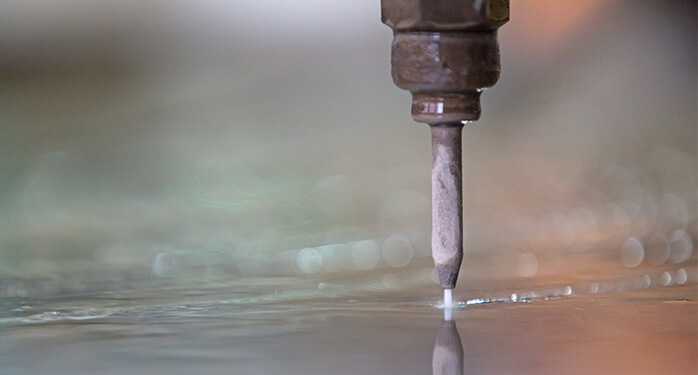Water jet cutting is a manufacturing process that cuts material using a very high pressure jet of water that can be up to 6150 bars.
Water jet cutting allows you to cut virtually any material, regardless of the thickness. Compared to plasma cutting and laser cutting, it is the only method capable of cutting any type of material except tempered glass (for example: stone, metal, glass, marble, elastomers, composite materials, etc.).
There are two water jet cutting techniques to do this :
– cutting with pure water : this type of water jet cutting allows you to cut materials that can be cut using a cutter, such as fine or less rigid materials. Water is propelled through a cutting nozzle that can be from 0.08 mm to 0.3 mm.
– cutting with water and an abrasive : this type of water jet cutting allows you to cut the most resistant materials. To do it, water is mixed with an abrasive, most often sand. The water and sand are propelled through a cutting nozzle that can be from 0.2 mm to 0.4 mm.
The benefits of water jet cutting compared to other cutting processes are: the possibility to cut soft materials, reduced costs, the product is not damaged by heat from a laser, and finally water jet cutting allows you to have cutting accuracy with a margin of up to +/-0.2 mm.
Compared to other cutting processes, such as laser cutting and plasma cutting, water jet cutting doesn’t distort the materials and doesn’t generate any toxic fumes. In addition, water jet cutting is the only method capable of cutting layers up to 600 mm depending on the material.
Water jet cutting makes it easy to create prototypes, unit parts, or parts in a series. Therefore, it is a process that is suitable for all business domains (product designers, engineers, mechanics, etc.), as well as all business sectors (architecture, as well as the shipbuilding, medical, chemical, mechanical, food, aerospace, automotive, robotics, etc. industries).


 Connect with Google
Connect with Google Connect with Facebook
Connect with Facebook